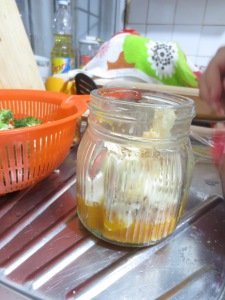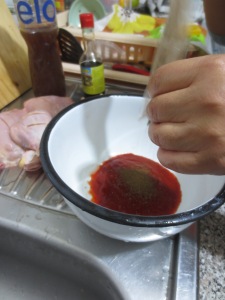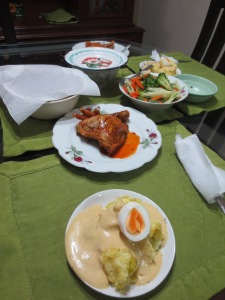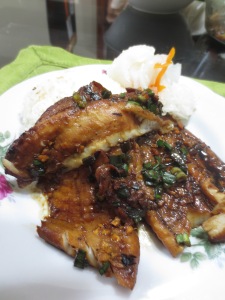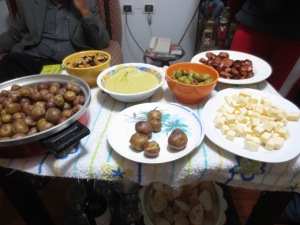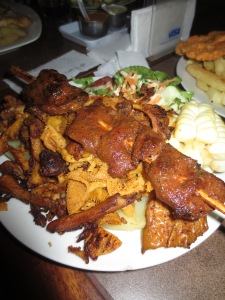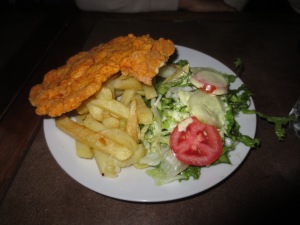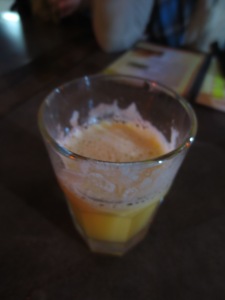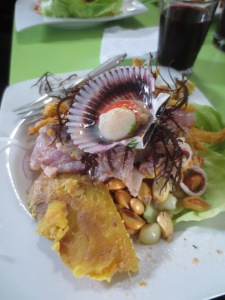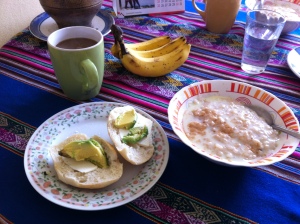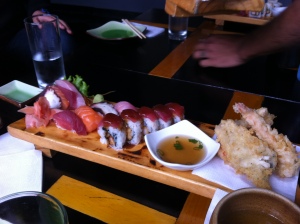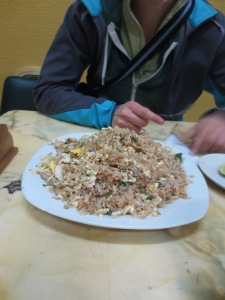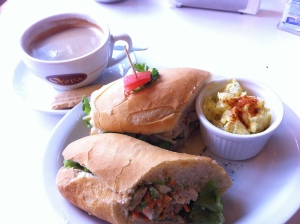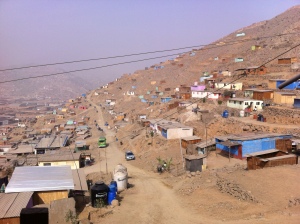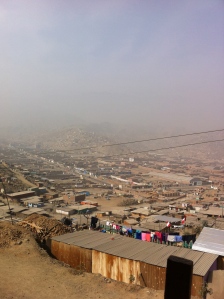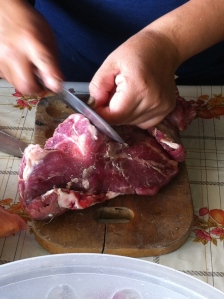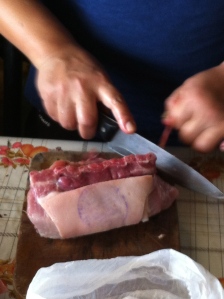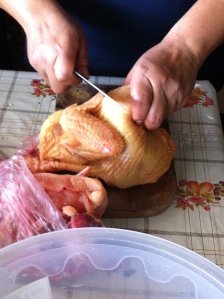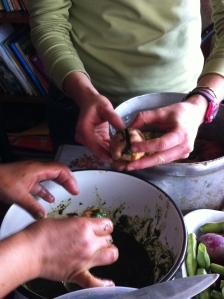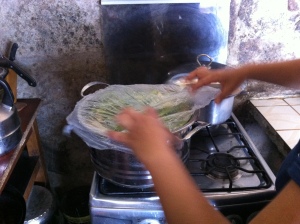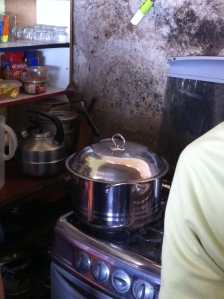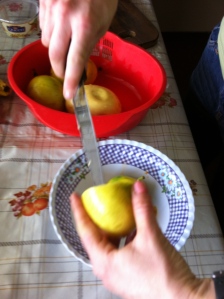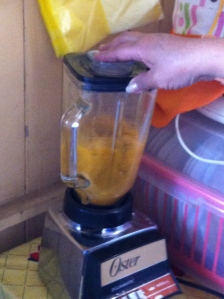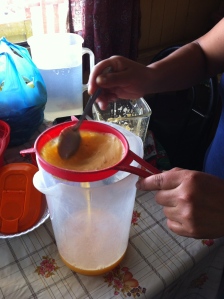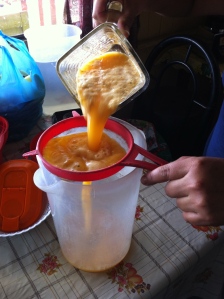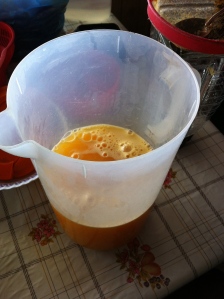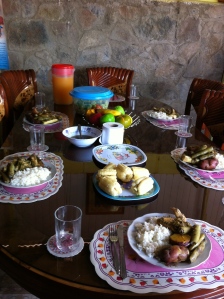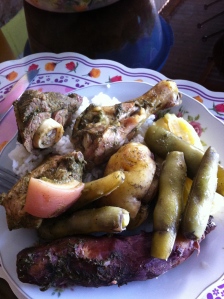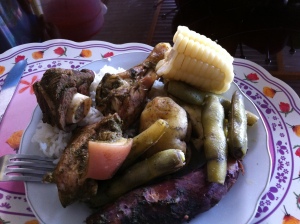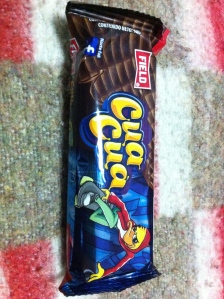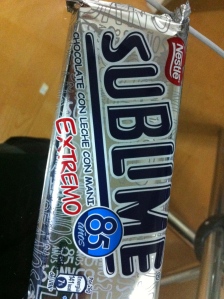My family just confirmed dates to visit me here in Perú, and it brings to mind a very important topic that I’m sure everyone is aware of, would like to share: SAFETY. With the recent shooting on the Metro bus in Seattle in a post 9/11 era, I am sure most people are ultra safety conscious. But whether in Rome, Seattle, Lima, anywhere, there are some tips that are more applicable to different parts of the world.
Prior to leaving for Lima, I attended an incredible one-week orientation at NIH with other Fogarty fellows as well as heads of research institutes and mentors. I wished we had a bit more extensive country-specific panels on safety, but there were some really helpful tips being passed out that day. And the take home message was an important one: “Your main objective, even though you are there to do research and promote global health, is truly to get yourself home safely.” Yes, no better words could have been uttered to convey the importance of staying safe, even though we are here to promote global health.
So here we go, a few tips I picked up from the locals and also from my own experiences:
MONEY & IMPORTANT DOCUMENTS
I think most people know not to flash your cash, jewelry and important documents around on the street. That goes without saying. You wouldn’t do that in your hometown, why would you do it in a foreign country? And yet, I still see tourists walking around with their wallets in their back pockets and their passports dangling from their necks for the whole world to see. Really…? That’s just a big bullseye sign for thieves and pickpockets. Maybe it’s just easier to hold up a sign that says “Rob me now”.
Don’t carry a lot of $$ on your person at any one time. Travelers’ checks help, but I would say when you land at the airport, exchange just enough money to get you into town + a little extra, and then you can exchange more when you get into town. The rates are usually better in town anyways, and they do take credit cards. In Lima, you have to show either a copy or original of your passport in order to use a credit card, and the banks do charge fees, so be aware of that.
Scotiabank doesn’t charge fees to take money out if you have a B of A visa, hurray!
Money belts work, use them…I have also found a jacket with an inner pocket and pockets with zippers are fantastic. I keep all my important things there, and only papers, chapstick, toiletries, snacks, water etc in my actual bag. My friend told me that bag is more of a distraction rather than a place to carry important things (of course, my chapstick and my cracker snacks are extremely valuable to me. But not things I can’t replace)
Another cool trick my local friends passed on to me: if you really refuse to use a money belt (because who is going to carry a money belt every day of their life when you actually live in the city?) and don’t have an inner pocket, hide your money within the pages of a notebook. What??? The logic is that if a robber steals your bag, they usually go for the wallet and throw the rest of the stuff onto the street before running off. So if you are that “lucky”, you can recover your money once they throw your bag away.
DON’T CARRY YOUR PASSPORT AROUND…MAKE COPIES
Another perhaps more obvious fact, don’t take your passport with you unless you absolutely need it. Make copies, and keep one at home with someone, keep one in your wallet and some other place safely. I actually kept copies of my credit cards, emergency numbers, passport, driver´s license etc. at home in California, copies locked up in my apartment, and at my office. That way if anything happens, I can recover it and show proof at the Embassy that I had all these documents at one time. Also kept information on all the numbers to call if my credit cards got stolen.
A GOOD BAG WILL SAVE YOUR BELONGINGS AND POSSIBLY YOUR LIFE
Unfortunately in Perú, carrying your laptop or big things are not really safe. So I have just left my laptop at home completely and use a flash drive or Dropbox for work. I did invest in an expensive slash-proof backpack and smaller travel bag. The nice thing about these is that there is a wire mesh in the straps and within the bag so a robber can´t just cut the straps or the bag and take the contents. There are also combination locks you can buy for these bags too.
But my most favorite accessory is a little clip on all of my zippers that attaches to the strap or buckle so it is more difficult to merely pull the zipper and take its contents. I figure, if it takes me about 2 minutes to open my bag, it will at least take a minute for an experienced robber to do so (and make a lot of noise and commotion while doing it).
Bought my bag from Pacsafe, which can also be found on Amazon: http://pacsafe.com/ But even so, I rarely use it and bought a leather shoulder bag here with a very sturdy strap and back pockets with zippers for daily use. It is just easier to have something smaller that you can hang onto.
Of course, carry your bag in the front of you and close to your body, and I have also learned to actually zip my jacket over the bag. That way, it is pretty much impossible to have anyone try to grab your bag or cut the strap when it is inside your jacket. I also clutch onto the strap or have one hand over the zippers that are more exposed on the front. Maybe overkill, but at least I hope it lets robbers know that if they are going to try to rip my bag away, they are going to have to fight for it.
But the advice was if a robber does approach you, just let them take it. Things are just things…they can be replaced, but our own physical and personal safety always rules first.
CROSSING THE STREET
Wha…? Crossing the street is insane here. Even with traffic lights, most drivers don’t care and even speed up when they see you coming. A glimpse of the typical traffic in Lima, and this is pretty much ubiquitous here.
And oh, have discovered that cars turn right from the MIDDLE TURN LANE EVEN WHEN IT IS NOT ALLOWED. >_< Turn signals aren’t always used, of course. So what to do? You definitely have to look both ways multiple times. Following the crowds can be helpful, but some people are reckless when they cross the street. Just have to be extra cautious. I have already seen two major traffic accidents within the first week here.
ASKING FOR DIRECTIONS, LOOKING AT A MAP
Asking for directions if you can manage Spanish seems to be the way to go. You definitely don’t want to be fumbling around with a huge map out in the street…that just screams robbery. I usually look up a map either at home or in a safe place (e.g. bookstore, department store) where it was less crowded first, then drew a simple map on a small piece of paper. In dire need, I looked for a police officer or a guard and looked up the map that way. Generally the officer will help you anyways.
There are tons of security guards around the city. There is the National Police or Policía Nacional del Perú, PNP, usually dressed in conspicuous green uniforms such as these:
There are also other units, with the blue-uniformed Serenazgo who operate at the municipal level as neighborhood watchmen (the very same who knocked on my door after the naked gringo in the shower incident…haha, please refer to my earlier post about living in Lima for the full story.) There are also local security guards generally dressed in dark brown or brown who guard local businesses such as banks and casinos.
I am also told there is a force of tourist police, prominently in districts such as San Isidro and Miraflores. Good to know…if you get robbed, they would be the ones to contact besides the Embassy for lost documents and other numbers with the Fogarty program.
http://www.pnp.gob.pe/direcciones/dirture/turismo.html
http://www.limaeasy.com/emergencies-help/emergency-numbers
I have to also add that I did buy a city map here, and it has saved my life many times. I bought it from one of the local book stores for about s./30 ($10.80) that shows all of the streets and neighborhoods within Lima. Google maps isn’t always accurate, so having this map was essential.
PLAY YOUR “NO HABLO ESPAÑOL” OR “I DON’T KNOW” CARD WHEN SOMEONE MAKES AN INQUIRY
The first weekend I was in Lima, I was walking around with Erin in Miraflores looking for apartments when a guy on the street asks me in English “Do you know what time it is?” Being the naive newbie, I looked at my watch and answered him. Erin pushed me to keep walking, and told me later that sometimes robbers ask you a simple question like that to distract you while he or another accomplice robs you. (Evil!) So if they ask you, don’t whip out your cell phone or flash your rolex (you shouldn’t be wearing a rolex anyways…but even inexpensive watches are targets). Just keep walking and say “I don’t know”
Another strategy while I was taking the Metropolitano was when an obviously Peruvian man came up and asked me for directions. I was like, “really…?” Among a huge crowd of locals, they ask me, an obvious foreigner for directions to the bus. Well, having my bag under my jacket and clutching onto it for dear life, it was pretty near impossible for him to steal anything (as everything valuable was also in my inner pocket). Then not 20 minutes later at another station while I was transferring buses, I got asked the exact same station. I just said, “No sé…perdón” (I don’t know…sorry”) and walked the other direction.
Of course, use your best judgement. Little old lady holding a baby in her arms asking for directions on the Metropolitano may be a little less threatening, but still be careful. Youth doesn’t always mean innocence. My prof from Seattle was robbed in Mexico by a bunch of little kids who surrounded her and unzipped her bag within seconds. I do answer questions now if I can help, but I am always clutching my bag while I do so. And I keep a clear distance between myself and the person I am speaking with.
WALK LIKE THE DEVIL IS CHASING YOU
A good pair of walking shoes is needed. Not just for hiking, but because I pretty much run through the city even when I am just walking to the market. Getting backed up or trapped by crowds is just an invitation for theft. We already stick out enough physically and already deemed a target. But I would rather be a moving target than a stationary one. It must be pretty funny to see a tall Chinese woman (well everyone thinks I am Japanese here for some reason) half running through the streets. I am pretty sure one day I will trample some poor little Peruvian woman or man with the way I am walking/running through the streets of Lima.
SIT IN THE BACK OF THE BUSES, AWAY FROM THE DOOR, AND HAVE YOUR PAYMENT READY
I will talk about different transportation methods in Lima in another post, but for now, I was given the advice by my mentors here to sit away from the doors and in the back of the buses. Why? First, driving here is scary. I was told that my friend got his driver’s license just 3 weeks after his first time behind the wheel. If there are any accidents, you don’t want to be in the front where most accidents happen.
Secondly, stay away from the doors, as sometimes robbers pretend to be passengers, board a bus and then run out with your stuff.
And of course, try not to get on buses that are empty, and for the smaller buses, ones that look like they will fall apart at the seams (and there are plenty of those.)
Buses are cheap here: only about s./1 to s./1.20 ($0.35 – $0.43) here no matter how far you go on coombis, micros/chamas or bigger autobuses, and the Metropolitano costs s./2 ($0.71). Smaller mototaxis (which seat only 1-3 people) are even cheaper, about s./0.70 ($0.25), but are definitely less safe and not really recommended. You don´t want to fumble around with opening your wallet for payment, so get your cash out and put it in your pocket in front.
For the Metropolitano, you need to purchase a card and put money on it. I brought a card holder that hangs around my neck from the US, and keep that hidden under my scarf. When I need to get on the bus, I just whip it out and then tuck it back in.
I think that is it for now. Stay safe!



